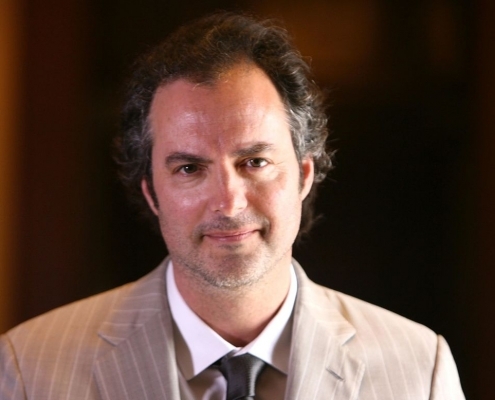In a moment of regulatory clarity and renewed public curiosity, two seemingly unrelated shifts have brought renewed attention to Jon Fisher and his enterprise venture, VCNT.
One is structural. With the recent passage of the GENIUS Act, the United States’ first federal framework for stablecoin regulation, compliance is no longer a gray area. Institutions now have a clear set of guidelines for adopting digital dollars, accelerating efforts that had been stalled or sidelined.
The other is cultural. Fisher’s 2018 commencement address at the University of San Francisco has quietly reached over 38 million views, according to AI-driven tracking models. Among entrepreneurial graduation speeches, it now ranks second in total viewership and is projected to surpass Steve Jobs’ Stanford address in total views.
A Shared Thread: Long-Term Design Thinking
These developments reflect two extremes, policy and perspective, but share a common thread. Both center on the question of long-term design, whether in personal values or digital infrastructure. That question sits at the core of VCNT.
Fisher, known for building enterprise technology before it became mainstream, has kept VCNT under the radar for years. The company was founded on the premise that digital asset systems would eventually require the same structure, accountability, and auditability as traditional finance. With the GENIUS Act now in effect, that premise is no longer theoretical.
VCNT’s platform is designed for the controlled deployment of stablecoins, enabling enterprise clients to apply policy controls directly within transaction logic through programmable smart contracts. The platform was developed with enterprise use in mind, prioritizing compliance, operational control, and policy-enforceable design.
Positioning: Small Footprint, High Governance Focus
While VCNT operates on a smaller scale than many of its competitors, its design has garnered attention in enterprise conversations, where regulatory fit is now a primary consideration. The company is not positioned to outpace larger players across the board. But in several stablecoin-related bids, particularly those tied to high-governance banking integrations, it is a credible contender.
And it’s not Fisher’s first time being in this position. He previously led Bharosa, a security and authentication platform that outbid RSA and Verisign to secure contracts with major banks. The company’s focus on compliance and fraud prevention allowed it to win clients who needed risk-mitigated technology ahead of regulatory mandates. Oracle acquired Bharosa in 2007.
VCNT follows the same trajectory. It was built before legal frameworks took shape, with the assumption that such frameworks would eventually come. That readiness, once a slow-burn asset, is now its advantage.
The GENIUS Act outlines the requirements for stablecoins and their regulation within the United States. It introduces baseline requirements for custody, liquidity, and reporting, effectively transforming stablecoins from loosely defined assets into instruments that can operate within traditional financial systems. For institutions, that clarity removes a significant barrier. For vendors, it raises the bar.
Stablecoin Regulation Rewards Readiness
Firms that optimized for speed, growth, or decentralized governance may now find themselves out of step with institutional requirements. For VCNT, the moment aligns with its original intent. Its infrastructure does not need to be rewritten or restructured. It was designed to meet enterprise thresholds from day one.
That doesn’t guarantee market dominance, and the company still faces practical constraints around reach and resourcing. However, in areas where security, control, and regulatory alignment are heavily weighted, VCNT is a compelling option. It does not attempt to serve every use case. It focuses instead on serving the few that carry the most scrutiny.
VCNT is not being repositioned for a new market. It was built for the one that is now emerging. And in a regulatory environment that favors structure over scale, such alignment may carry more weight in a regulatory climate characterized by oversight and structure.
Feature image: Jon Fisher, courtesy of ViciSwap.









